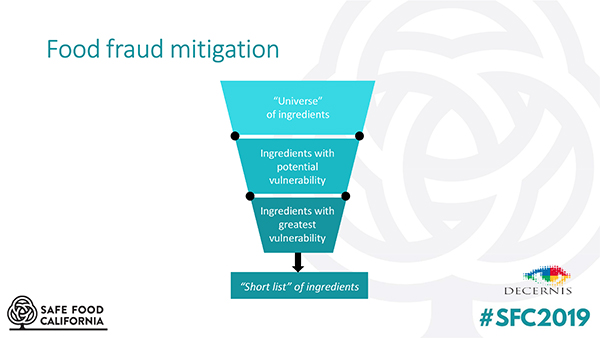Fostering a strong food safety culture is one of the most important things those in leadership in the food manufacturing and processing industries can do. Whereas laws dictate the food safety regulations to which food manufacturers and processors should adhere, facility food safety and color-coding plans dictate how those regulations should be followed, and it is the inherent culture of the facility that ensures these guidelines and procedures will be followed. A facility’s culture is made up of the shared values of the company, the unwritten norms—good and bad—that ultimately influence the behavior of those in the company. It most often stems from those at the leadership level as they set the tone and expectations for the organization.
Most importantly, however, is the understanding that culture is fluid. Be-cause it is not defined but rather just is, a culture can morph over time in a ripple effect manner. If those in leadership begin to place a higher emphasis on food safety, middle level managers will take note and those sentiments—consciously or unconsciously—will be echoed to those lower in the company’s organizational hierarchy.
At the same time, the reverse is equally and, perhaps, even more likely, true. It’s often harder to do the right thing when it comes to food safety; there are extra steps involved to ensure the environment and tools used are clean, to check and double check the quality of the product and to communicate any concerns that may be encountered along the way. It’s easy to look at someone who takes shortcuts—particularly someone at a higher level than you—and decide that’s an accepted behavior. This can lead to devastating results quickly in a food processing or manufacturing facility where everything from the profit margins to the ability to employ workers to the legal standing of the company hinges on quality assurance.
That said, it’s important that those at the leadership level prioritize foster-ing a positive food safety culture by leading by example. Additionally, it’s vital to regularly glean a quick read of the room to stay on top of culture shifts. The following are some questions you can use to guide that check-in and identify potential red flags long before those worst-case scenarios have a chance to play out.
Would you describe the company’s food safety expectations to be one-size-fits-all notions or, rather, clearly defined rules tailored to different teams and job roles?
If you would put your company in the first category, it’s important you take some time to consider the procedures and guidelines put in place in your facility. Whereas you want company-wide buy-in for overarching food safety priorities, the job role will look very different for, say, someone on the packaging line versus the janitorial team. Within those teams, there should be a shared vernacular and routine specifically related to the job role they need to carry out. It’s unfair and perhaps a bit risky to assume that employees will know how to best carry out their job if “best” is never properly defined for them in training procedures.
Is there clear and consistent messaging that stems from leadership about a commitment to food safety?
The actions and words of those at the highest level of an organizational hierarchy set expectations for the entire company. It’s not only important that they communicate the importance of food safety to the company, but that they return to that conversation often. It’s a good idea to reiterate the significance of food safety considerations in vision and mission statement documents but to also bring it up during staff meetings, company-wide emails and annual reports. Food safety trainings should be held regularly as the more of-ten you highlight these expectations, the more they are thought about across the company. That consideration is what ultimately leads to action.
Do members of leadership take on an active role during food safety training sessions?
Again, we cannot stress enough the importance of those at the top setting the tone for a positive food safety culture by not only talking the talk but also walking the walk. Employees will take note if those higher up in the company who take time out of their day to partake in food safety training. It sends the message that this is indeed important to the company and therefore should be important to the employees.
Are food safety expectations communicated to employees via multiple communication outlets?
Just as a teacher in grade school aims to consider the unique learning styles of students, you should be mindful of the ways in which you are communicating with your team. Some people retain information best through auditory exposure, some are more visual learners and, for some, recall is best after hands-on activities. Consider the ways in which your currently communicate food safety expectations to employees and take note of any additional approaches you might need to take to best reach all employees.
Along those same lines, you should be mindful of additional considerations that might be necessary depending on the makeup of your staff. We recommend working closely with human resources to identify whether or not you should incorporate multi-lingual training procedures and how to best accommodate any employees with disabilities.
Does your company have an obvious method in place for raising concerns about food safety?
The mistake a lot of facilities make is focusing too much on what it looks like for things to go as planned and to overlook procedures for when things don’t go according to plan. If you asked any member of your team, they should be able to tell you the preferred method for reporting any concerns related to food safety. We recommend polling a few employees across different job roles to see if that is the case. If not, it’s vital you establish a protocol and clearly communicate that protocol to all employees. The easier the protocol, the more likely employees are to remember it and to follow through when necessary.






















